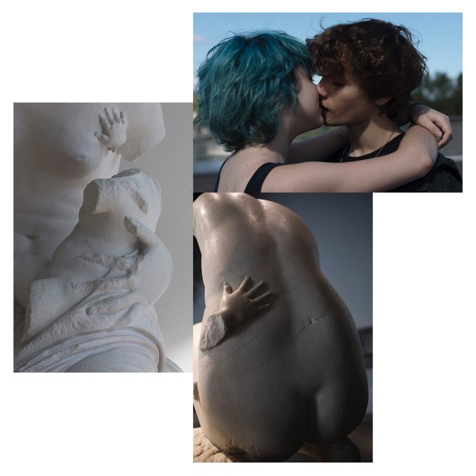[:it]A cura di Marco Delogu e Flavio Scollo
8 novembre – 26 dicembre 2017
MACRO, Via Nizza 138, Roma
Léonie Hampton ha interpretato La Commissione Roma come una opportunità per riflettere sulle sue preoccupazioni per la dislocazione nel mondo moderno e le sue paure per le generazioni future; dalla paralisi del genere umano nei confronti della lotta alla distruzione ambientale, alla crescente disparità economica che incoraggia molti a rischiare la vita attraversando il Mediterraneo.
La Roma che Léonie ha trovato, alla fine di un’estate particolarmente calda del 2017, era alle prese con una forte siccità e le difficoltà nell’accogliere un numero sempre maggiore di migranti. Le rovine di una Roma monumentale sono diventate per lei un palcoscenico onnipresente per le piccole storie della città. Al di là di queste rovine, Léonie ha ricercato la sua personale visione di un mondo frammentato.
Ha esplorato la città guidata dal gruppo Stalker, artisti noti per la loro straordinaria conoscenza del territorio e soprattutto dei tesori abbandonati della città: le opere architettoniche mai completate, le aree abbandonate che sono tornate ad essere dominio di fiori selvatici e animali, le città temporanee costruite sulle rive del Tevere da migranti intrappolati in un limbo burocratico.
Le immagini che Léonie Hampton ha tratto dalle sue esplorazioni descrivono un mondo sulla soglia del collasso ma brulicante di vita. I bambini sono una presenza costante nella serie. Dormono, mentre questo mondo onirico e distopico gira intorno ad essi; la loro innocenza fa da contrasto al danno che il tempo e l’abbandono hanno recato a questa città. Nella loro vitalità si ritrova la speranza per il futuro incerto di questo mondo.
[:en]Curated by Marco Delogu and Flavio Scollo8 November – 26 December 2016
MACRO, Via Nizza 138, Rome
Léonie saw The Rome Commission as an opportunity to explore her anxieties about the dislocations of the contemporary world, and her fears for the next generation, from the paralysis of mankind in the face of environmental destruction to the growing wealth divide that encourages so many to risk their lives to cross the Mediterranean.
The Rome she encountered at the end of the incredibly hot summer of 2017 was struggling with acute water shortages and failing to cope with the ever growing numbers of migrants. For her the ruins of the classical and monumental became an omnipresent stage to the small stories of the city. Beyond these ruins Léonie searched for her internal vision of a broken world.
She approached the city guided by the Stalkers, an artist’s group renowned for it’s encyclopaedic knowledge of Rome’s unpublicised neglected treasures – its half completed and abandoned building projects, its wastelands returning to wildflowers and animals, the temporary cities on the banks of the Tiber of migrants trapped in legal limbo.
Leonie’s images from these explorations describe a world on the brink of collapse yet teeming with life. Children are ever-present in the series. This dystopian dreamworld spins while they sleep, their innocence counteracts the damage wrought by time and neglect to this city. In their vitality lies the hope for the future of this uncertain world.
[:]
